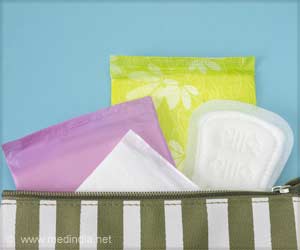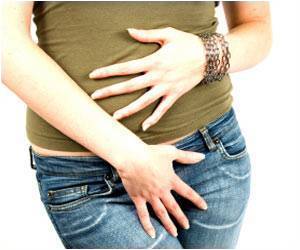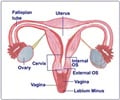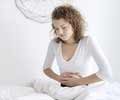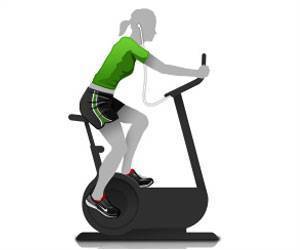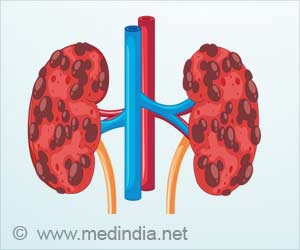New study finds that low-income women in the United States lack access to basic menstrual hygiene supplies.

‘Lack of menstrual hygiene supplies results in adverse health problems including infection and poor quality-of-life. Hence, a new study points to the need for extensive education and policy shifts surrounding menstrual and women's health. Improved access to menstrual hygiene products for low-income women should be advocated by health care providers across the United States.’
Read More..




Kuhlmann's study found that nearly two-thirds of the women surveyed were unable to afford menstrual hygiene supplies like pads or tampons at some point during the previous year, and 21 percent of women lacked supplies on a monthly basis. Nearly half - 46 percent - of those surveyed could not afford to buy both food and period-related products during the past year.Read More..
While lack of access to menstrual hygiene products can result in negative health issues including infection and poor quality-of-life, Kuhlmann points to the need for broader education and policy shifts surrounding menstrual and women's health.
"Adequate menstrual hygiene management is not a luxury," Kuhlmann and her co-authors conclude in the study. "It is a basic need for all women and should be regarded as a basic woman's right. Our failure to meet these biological needs for all women in the United States is an affront to their dignity and barrier to their full participation in the social and economic life of our country."
Between July 2017 and March 2018, the study team surveyed 183 women between the ages of 18 and 69 who were drawn from 10 participating St. Louis community organizations that provide services to low-income people. Most of the women had begun menstruating between the ages of 12 and 13, and have spent decades coping with period product insecurity.
Lack of access to menstrual hygiene products meant that 36 percent of the surveyed women who reported being employed part or full-time had missed one or more days of work per month due to their periods.
Advertisement
According to Kuhlmann's findings, taxing period products at the full sales tax rate adds quickly to the "economic cost of being a woman." While the area's sales tax rates vary, if a woman buys a 36-count pack of overnight Maxi Pads with Wings for $9.27, she would pay between $0.71 and $1.08 per pack in sales tax for her menstrual hygiene products. That cost is nearly 10 percent of the item's price. If the pack were charged at the lower food sales tax rate, the cost per pack would drop significantly, saving a woman over the course the year and her menstruating lifetime.
Advertisement
Women who lived in households with a daughter who was also menstruating reported: "making do" with alternate, jury-rigged period supplies so they could buy period products for their daughters to use. "The cost of buying menstrual hygiene products for multiple women in a household accumulates quickly and can add to the struggles women have in coping with the realities - bleeding, cramps, and other symptoms - of their menstrual cycles," Kuhlmann said.
In open-ended survey questions, the women also described struggling to manage heavy bleeding days during their periods with products made available to them; problems accessing products due to limited public transportation options, and concerns about their safety and sanitation during their monthly cycles.
Some of those surveyed reported that as a last resort when they had no money or place to get period products, they stole them or went to hospital emergency rooms to receive pads intended for post-partum women.
The team also surveyed 18 St. Louis non-profit organizations about what menstrual hygiene products they offered to their clients. Thirteen of those organizations provided period products to their clients, but nine reported that those supplies were only available intermittently.
"It's easier to get diapers than period products in St. Louis," Kuhlmann said. "Women buy disposable products when they can, but are often forced to rely on donations and to create make-shift pads and tampons for themselves, mostly out of toilet paper, tissue, or paper towels but also out of their kids' diapers, old socks, ripped T-shirts or rags. When women with limited incomes are forced to make choices about their own needs versus those of their children, they often prioritize their children's needs. They will purchase diapers first and then get menstrual hygiene products for themselves if money remains."
The study calls for the creation of a community resources directory, follow-up with hospitals and health care providers, increased menstrual hygiene education and advocacy efforts to address tax rate, transportation and bathroom access issues identified by the survey participants. In order to address the needs identified by the study, Kuhlmann, together with Ellen Barnidge, Ph.D., MPH, associate professor of behavioral science and health education, and Enbal Shacham, Ph.D., associate professor of behavioral science and health education, are conducting a "women's resources audit" in the City of St. Louis examining period product availability, cost and overall access.
"This must change," Kuhlmann and study authors note. "We urge women's health care providers and their professional organizations to advocate for such policy changes."
Source-Eurekalert

